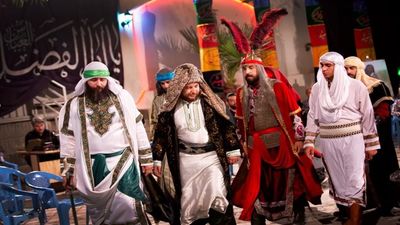Hossein Mosafer-Astaneh made the remarks following the first performance of ‘Zakhm-e Atiq’ on Saturday night, clarifying that all strata of society in Iran, with any type of thinking, have one common point with ta’zieh, and that is their bond with Ashura culture, according to IRNA.
The performance is organized by Revayate Fath Cultural Foundation, the performance will run through September 2.
Referring to the unique capacities and characteristics of ta’zieh, he said, this type of theatrical performance is one of the special Iranian arts that does not exist anywhere in the world, although some countries including Iraq, Lebanon, Turkey, Pakistan and India have recently formed some groups to imitate this art.
He noted that compared to other types of performances, ta’zieh is more influential, highlighting that ta’zieh must not fade into oblivion, adding that there should be various ta’zieh performances throughout the year, not just during certain times.
Mosafer-Astaneh named holding 10 rounds of such performances in previous years, saying that once features of one type of art has been recognized there should be ways to implement it.
Several domestic and international theoreticians, scholars, and researchers are of the idea that almost all teachings in society can be expressed through ta’zieh.
Ashura, the 10th day of the first month of the Islamic calendar, Muharram, is the climax of the mourning processions for Imam Hussein (PBUH), a grandson of Prophet Muhammad (PBUH) and his true companions who were martyred in the modern-day Iraqi city of Karbala by the forces of the second Umayyid caliph, Yazid.
Ta’zieh is a narrative, epic and religious performance which revolves around ‘Ashura’. What we observe as ta’zieh in its current form was developed during the Safavid Era, but it actually dates back to the pre-Islamic period.
Source: Iran Daily

